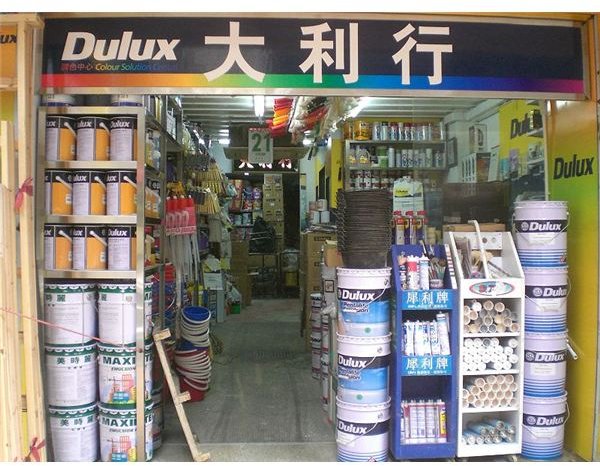Avoid Hazardous Chemicals that are in Paint --- Look for Green Seal Approval
Green Seal for Environmentally Safe Paints and Finishes
When it comes to understanding the harms posed by the dangerous chemicals used as paint ingredients, the focus of research is almost always directed towards a collective set of substances called volatile organic compounds or VOCs. These color-coating ingredients are capable of emitting harmful gases into the atmosphere, which can cause serious ozone depletion.
In line with the task of determining the harmful substances, we referred to “Green Seal’s” environmental standards for paints and coatings. These include those applied as anti-corrosive, or reflective coatings as well as those used as primers or undercoats.
“Green Seal”, is a not-for profit organization pioneered by a group of environmentalists, working closely with the government and paint manufacturers as well as with the other members of various industries. Their aim is to ensure that products claimed as green are certifiably green in all aspects and levels. Below is a list of prohibited chemicals, absolutely banned from inclusion as paint or coating ingredient and the allowable limits by which VOCs should be added as components.
List of Prohibited Chemical Compounds
The following substances are prohibited because they have been proven as carcinogenic or having mutagens that are capable of emitting toxins, which adversely affect reproductive health. They also contain harmful air pollutants determined as lung irritants, in addition to their ozone-depleting compounds. The only exceptions are titanium dioxide and carbon black, whose inclusion as paint ingredients is allowed for as long as their quantities are kept at less than or equal to one percent of the product’s weight.
(1) 1,2 dichlorobenzene
(2) Alkylohenol ethoxylates or APE
(3) Formaldehyde and its donors
(4) Pthalates,
(5) Triphenyl tins (TPT)
(6) Tributyl tins (TBT)
(7) Lead
(8) Mercury
(9) Cadmium,
(10) Hexavalent Chromium
(11) Elemental Antimony and its compounds
Volatile Organic Compounds

Volatile organic compounds are both man-made and naturally occurring compounds, capable of interacting with the other gaseous forms present in the Earth’s atmosphere. They have been proven capable of depleting the ozone layer since their interaction with ozone gases adversely affect the broken down oxygen atoms of ozone gas.
VOC gases that combine with the ozone’s oxygen prevent the oxygen atoms from participating in ozone formation. As a result of this process, the lower stratosphere is unable to keep up with the rapidity by which UV radiation breaks down the ozone gas. Thus, creating a gap or thinning of the lower stratosphere’s layer which we refer to as ozone depletion.
There are more than a hundred chemical compounds listed as VOCs and the Environmental Protection Agency (EPA) has classified those into Class I and Class II - Ozone Depleting Substances based on the 2007 Montreal Protocol. The latter refers to the event where all recognized members of the United Nation ratified their treaty to phase-out the harmful compunds included in the said list. (Readers can find the link to EPA’s list in the reference section bleow). .
At this point, the reader should keep in mind that some VOCs are still allowed, at certain tolerable levels, which also depend on the type of paint or coloring material.
Low Level VOC Standards

Paints used for indoors have different sets of allowable levels of measurements, compared to those used for exterior purposes. Green Seal’s objective for these different sets of standards is to protect the quality of indoor air since the presence of VOCs in confined spaces pose greater health risks to home dwellers.
The only drawback to low VOC paints is the limiting of paint color options within the light-to-medium range.
Nonetheless, the following are the standards set by Green Seal as low level VOC content in paints, to ensure that the hazardous chemicals are kept at tolerable levels. The figures indicated are the amount of VOC content allowed and expressed in terms of grams per liter.
Flat Topcoat - 50 g/L
Non-Flat Topcoat - 100 g/L
Primer or Undercoat -100 g/L
Floor Paint -100 g/L
Anti Corrosive Coating -250 g/L
Reflective Wall Coating - 50 g/L
Reflective Roof Coating -100 g/L
VOC Level at the Point of Sale
Flat Topcoat with added colorant - 100 g/L
Non-Flat Topcoat with added colorant - 150 g/L
Primer or Undercoat with added colorant - 150 g/L
Floor Paint with added colorant - 150 g/L
Anti Corrosive Coating with added colorant - 300 g/L
Reflective Wall Coating with added colorant - 100 g/L
Reflective Roof Coating with added colorant -150 g/L
Paints and coatings with Green Seal approval means the manufacturer’s product has passed the testing and certification requirements for environmentally safe consumer goods.
Consumer Information for the Do-It-Yourself Type
Even though VOCs are still included as paint ingredients, homeowners performing house painting projects on their own or as do-it-yourselfers, are advised to carefully consider the manufacturer’s information and instructions regarding the limits of paint applied to a specific area. Users are provided with sufficient instructions for ventilation, proper use, disposal and recycling, in order to prevent the hazardous chemicals in paint from causing environmental damage.
References
- Image: Wikimedia Commons/United States National Aeronautics and Space Administration (NASA) under Photo ID: GPN-2002-000117 AND Alternate ID: 049.
- Image: Wikimedia Commons/Dromafoobeno
- EPA -Ozone-depleting Substances
- Green Seal Standards
- Image: Wikimedia Commons/Hardcoreraveman
